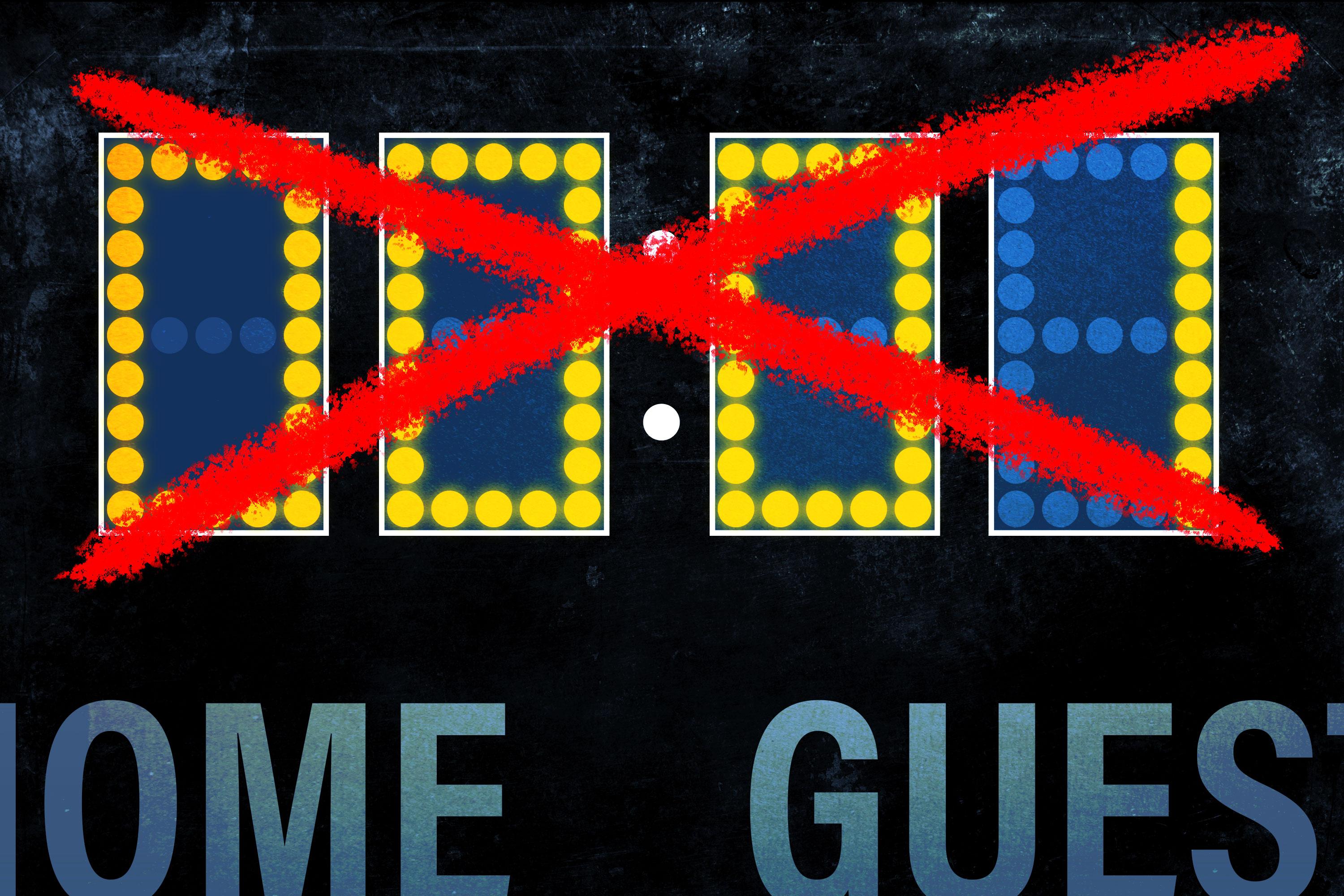How Some of the NBA’s Greatest Games Would Change Under the Elam Ending
The Basketball Tournament has implemented a radical tweak to late-game strategy by eliminating the game clock in the final minutes. We’ve retroactively applied the Elam Ending to some classic games of the past 20 years. Did it kill iconic moments, or amplify them?
Basketball is a game of speed and power, angles and space, flow and momentum, and, above all else—motion. None of this is unique to basketball, but what is unique about basketball—at least at the highest level—is how all of that can fly out the window in the final minutes. Tightly contested games in crunch time are, somehow, often unwatchable. They become static spectacles in which at least one team takes endless trips to the free throw line. It can grind a fluid, beautiful game to a halt.
Ball State professor Nick Elam has been trying to solve the issue of intentional fouling at the end of basketball games for more than a decade. Recently, his theories have been put into practice. For the past month, The Basketball Tournament—the $2 million, winner-take-all summer tourney established in 2014—has experimented with a wild rule change. Instead of letting the clock play out at the end of regulation, they wipe the clock clean at the first dead-ball situation with less than four minutes remaining (for the NBA, Elam recommends doing so with three minutes remaining). At that point, they create a target score for the game by adding seven points to the leading team’s score. First team to hit that target wins. No clock, and, most importantly, fewer incentives to intentionally foul.
So, if a score is 100-98 within three minutes and there is a stoppage in play, then the clock gets erased and 107 becomes the target score. It then becomes a race against the other team to reach that end point—not to beat the clock.
With no reason to preserve precious game time, teams have no incentive to intentionally foul. Instead, they have to tighten up their defense, and the ends of TBT games look more like normal basketball than the foul-fests many current college and pro games turn into. Elam also believes that TBT games can be more dramatic, too. Though there is no overtime and no buzzer-beaters, every game has to end in a made shot—which can have the feel of a buzzer-beater.
The Elam ending would undoubtedly improve the watchability of hundreds of NBA games that finish with endless trips to the foul line. But could it improve upon some of the NBA’s greatest highlights?
I took a look at some of the best playoff games from the past two decades to see what would happen if the Elam ending were in effect. It’s a theoretical exercise, sure—obviously team behavior would change under different rules—but it illuminates how the Elam ending could change the game as we know it. Let’s play the “what if” game: here are 10 NBA games that represent how the Elam ending could improve—or hurt—some of the greatest moments from the past 20 years.
2016 NBA Finals, Game 7
You know how this one goes. LeBron James’s block. Kyrie Irving’s shot. Kevin Love playing the best defense of his freakin’ life. In the end, the Cavs won, 93-89 ... three points short of the target score of 96, which was set when LeBron drew a foul on Steph Curry with 2:50 left on the clock.
Would more basketball possibly have made this finish any better? The 89-89 tie didn’t break until Irving made his shot with 53 seconds remaining. That’s just under two full minutes of basketball with no scoring, but that doesn’t mean it was boring to watch. In fact, the opposite is true: With every second that ticked away and every shot that clanked off the rim, the stakes only grew. Under the Elam ending, every missed shot would just be a missed opportunity to get closer to the finish. It could have been exciting to see the Warriors attempt to score seven points before the Cavs could score three, but it’s hard to think the Elam ending would have made this game any better than it already was.
2014 Rockets–Trail Blazers, Game 6
This shot wouldn’t exist with the Elam ending. Portland had only 0.9 seconds left, down 98-96—Damian Lillard had to immediately shoot, and his bucket wasn’t just a game-winner, but a series-winner. Lillard’s 3 made it 99-98 Blazers, but under the stipulations of the Elam ending, the target score would have been 100 points. There still would have been a chance for a series-winning shot for the Rockets. Every series would end with a series-winning shot under this rule, but it wouldn’t necessarily have the same frantic, now-or-never energy.
Instead, this game, under those rules, would present a new, exciting scenario: “Next bucket wins.” The Rockets would be two points away from the victory, and the Blazers would be just one away. That would make for incredible stakes.
2013 NBA Finals, Game 6
Tony Parker had an incredible stretch in this game that gets overshadowed by the end result. With less than two minutes left, he sank a 3 in LeBron’s face, stole a Mario Chalmers pass on the other end, and then rushed down the court into the paint, stopped, spun, and drained another bucket.
Manu Ginobili sank a couple of free throws after that, and the score was 93-89, putting the Spurs one short of the target score: 94.
This is where the theoretical exercise unravels. Ray Allen fouled Ginobili intentionally at this point to stop the clock with less than a minute to go. He never would have done so under the Elam system, since the Spurs would have been just one point away from victory—but it doesn’t really matter, as the Spurs had a four-on-one developing when Allen committed the foul. There’s almost no way they fail to get a point out of that possession, even without Allen’s intentional foul. The Spurs would have walked away with an NBA title.
That means we wouldn’t have gotten this:
Rebound Bosh. Back out to Allen. His 3-pointer …
This is one of the few games in which intentional fouling actually helped the watchability of the end result. Just think: the Heat had to foul on back-to-back possessions, the Spurs had to miss at least two of their four free throws, and the Heat had to drain two 3s. All of that happened.
We might nostalgically pine for Parker’s stop-and-spin move under the Elam ending, but Allen’s shot is unquestionably a better highlight.
2013 Warriors-Spurs, Game 1
This double-overtime game served as an official announcement of Steph Curry’s ascendancy to superstar status: the Warriors’ fourth-year player put up 44 against the Spurs. When Golden State called a timeout with a 104-96 lead and 2:42 left, it looked like the game was over. But San Antonio clawed back, and a late Danny Green 3 sent the game into OT.
San Antonio eventually won, 129-127, but the Elam ending would actually reverse the result: The Warriors were the first team to the 111-point target on a Harrison Barnes 3-pointer early in the first overtime.
That means viewers would miss out on nearly two overtime periods and this clutch basket from Ginobili:
It also means viewers would have missed the woman who was screaming into the mic. Maybe it’s just fine to lose this particular game-winner.
2009 Cavaliers-Magic, Game 2
This is another classic buzzer-beater that wouldn’t exist under the Elam ending.
The Cavs would have needed 98 points to win this game, but LeBron’s 3-pointer brought them to just 96. Like the Lillard shot, this could still be the setup for an incredible finish, but it would have taken away from arguably the most iconic moment of LeBron James’s first act in Cleveland.
2005 NBA Finals, Game 5
You could write an entire book on how different end-of-game rules would affect Robert Horry’s career.
This shot happens at the very end of overtime, which is, of course, an issue for the Elam ending, in which there is no overtime. The target point total would have been 90 in this game, which the Pistons reached at the beginning of OT when Tayshaun Prince made a 2-pointer.
But this game would have been exciting even without Horry’s heroics—basketball isn’t all about buzzer-beaters, after all. From 33.8 seconds left in the fourth quarter until a minute and 25 seconds into overtime, no team scored. The game was tied, 89-89—just one shy of the target goal. In the Elam system, both teams would be fighting for that single point for two minutes. That’s high drama.
2004 Spurs-Lakers, Game 5
The Derek Fisher shot with just 0.4 seconds left is so iconic that it’s easy to forget the shot before that, when Tim Duncan took a wild, top-of-the-key fadeaway over Shaq to put the Spurs up one.
Both of these shots were breathed into existence by a lack of time. Duncan knew he had to put something up; Fisher had no choice but to immediately turn and shoot. Neither would exist under the Elam ending, and the game would have continued, since the target score would have been 78. Fisher’s shot made the final score 74-73. That leaves room for plenty more action, but there’s no finish under the Elam system that could have been more incredible than this one.
2004 Pistons-Pacers, Game 2
This was the best block in recent NBA memory until LeBron in the 2016 Finals.
It would still exist under the Elam ending, as the target score for this game would have been 74, which neither team ever reached. An Elam ending to this game may have been even better than the one in reality. Tayshaun Prince blocking Reggie Miller here preserved Detroit’s two-point lead, but with the Elam rule, the Pistons would have been five points from victory, instead of 15 seconds from it. When Detroit got the rebound off that block, Indiana had to immediately foul. Richard Hamilton sank two free throws to effectively put the game out of reach for the Pacers. But with the Elam ending, the Pistons would have had more work to do, and the Pacers would have had no incentive to foul.
2002 Western Conference Finals, Game 7
We can right an NBA wrong here. No, the Elam ending wouldn’t have changed the result of the notorious Game 6 of the Western Conference finals (in fact, the Lakers would have made nine free throws without a single in-game bucket to win), but it would change how Game 7 played out.
The Lakers and Kings traded buckets until they tied it up, 96-96, with 1:12 left to go—plenty of time. But under the Elam ending, both teams would be a mere two points away from victory. From there, Derek Fisher missed a 3, and Vlade Divac fouled Kobe Bryant as the two went for the rebound. Look at Divac’s reaction as he hears the foul call:
Now imagine his reaction if Bryant’s two subsequent foul shots were to win the game. Bryant sank his first free throw … and missed his second. The Kings called a timeout and drew up a play where Mike Bibby passed to Chris Webber at the top of the arc, and then Webber swung it back over to Bibby by the baseline. He sank a long, 22-foot 2-pointer that would have sent the Kings to the Finals.
The overtime that this game went to (L.A. won by six) wasn’t nearly as dramatic as Bryant shooting for the win and Bibby coming back to drain a walk-off jumper would have been.
1998 NBA Finals, Game 6
With the score tied at 83, John Stockton drained a 3, Michael Jordan responded with a quick basket, and then, after a Karl Malone turnover, we get it, one of the most iconic plays in sports history: The Last Shot.
Five game seconds and a failed Stockton 3-point attempt later, the Bulls were walking away with Jordan’s sixth championship. There’s just one problem: Jordan’s basket made the score 87-86, but the target score was 88. We’d still have basketball left to play here.
Of course, the Elam ending would have changed nearly everything about the way both teams operated in those final seconds. Jordan’s shot was a pull-up 2, but he almost certainly would have tried for the walk-off 3 in that situation knowing the Jazz were just one bucket away from the win. Jordan sank an abysmal 23.8 percent of his 3s that season—but could you possibly bet against him in that situation? Meanwhile if the Bulls didn’t make a 3 on that possession, then the Jazz wouldn’t have had to rush on the other end. With no game clock, they could have set up their regular offense, and any bucket would have won them the game.
The Last Shot is remarkable, but a situation in which the Bulls need a 3 and the Jazz need a 2 could be just as dramatic. It’s easy to forget that Jordan’s last shot as a Bull wasn’t a buzzer-beater, but under the Elam ending it could have been a walk-off bucket for a championship—Jordan just would have had to step back a few feet.

